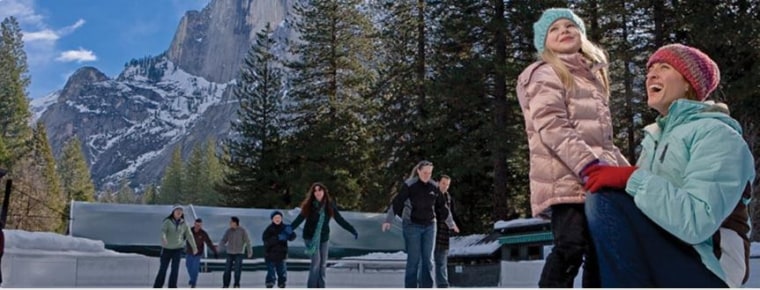As Yosemite National Park prepares to welcome millions of visitors to its mecca of rock walls, waterfalls and valleys this summer, it's also gauging public reaction to plans that could change the recreational landscape of one of the nation's most visited parks.
In January, the National Park Service released its draft plan for managing the Merced River corridor for the next 20 years. Because of an attempt by a developer to dam parts of the river in the '80s, the river was designated as a "national wild and scenic river." Since then, lawsuits have debated exactly what that means. Now, the Park Service finds itself in the unpopular position of balancing competing interests.
The mission of national parks, said Kathleen Morse, planning division chief of Yosemite, is for people to enjoy them while protecting them for the future. "It continues to be a struggle to do both things well," she said.
See a slideshow of national parks at Discovery News
Because Yosemite is in the spotlight of national parks, many are watching how decisions will be made there regarding how wild vs. developed a national park should be.
"Without a doubt Yosemite is a trendsetter at the forefront of issues, good or bad, in having this debate," said Mike Marshall, executive director of Restore Hetch Hetchy, a group hoping to restore one of Yosemite’s valleys that has been dammed and used as a reservoir for about 100 years.
Most of the media attention has focused on a few recreational activities that would close or be limited: the skating rink would close, one or two swimming pools would close, and commercial outfitters would not be allowed to rent bikes or rafts, although those activities could continue with visitors’ personal equipment.
The plan also calls for major restoration of the river banks, protecting meadows, revised traffic routing to improve congestion and alleviate impact to the river, and changes to parking.
In the midst of a 90-day comment period, the plan has drawn criticism from both sides. Some, like Rep. Tom McClintock, a Republican from Granite Bay, have likened the restrictions on recreation to harassment. Others say the park should take greater steps toward restoring the wilderness.
"We applaud the Park Service for restoring the riverbanks and protecting the meadows, but this was a stark opportunity to do a lot more," said John Brady, chairman of Mariposans for the Environment and Responsible Government, an environmental group.
"The Park Service says it wants to maintain the traditions that generations of families have enjoyed, but we think it should be enjoyed for its natural purposes," said Brady. "If people want to go to Disneyland, they can do so."
Marshall agrees.
"It's a national park because of its scenic natural values, not because it has a great swimming pool or a fun place to skate on Christmas Eve," Marshall said.
Marshall's group is hoping to restore another area unique to Yosemite: the Hetch Hetchy valley currently acts as a reservoir that supplies San Francisco with water. A ballot question to San Franciscans to restore the reservoir to its natural state failed last fall, but the group remains hopeful.
"If we're really concerned about human impact, we need to look at the entirety of the park," Marshall said. "From my perspective, closing a swimming pool or an ice rink pales in comparison to the opportunity to restore Hetch Hetchy valley."
Over the summer, the environmental impact statement will be finalized, and then it will be presented to the court for approval.
Read more about whether national parks should be left strictly wild at Discovery News
